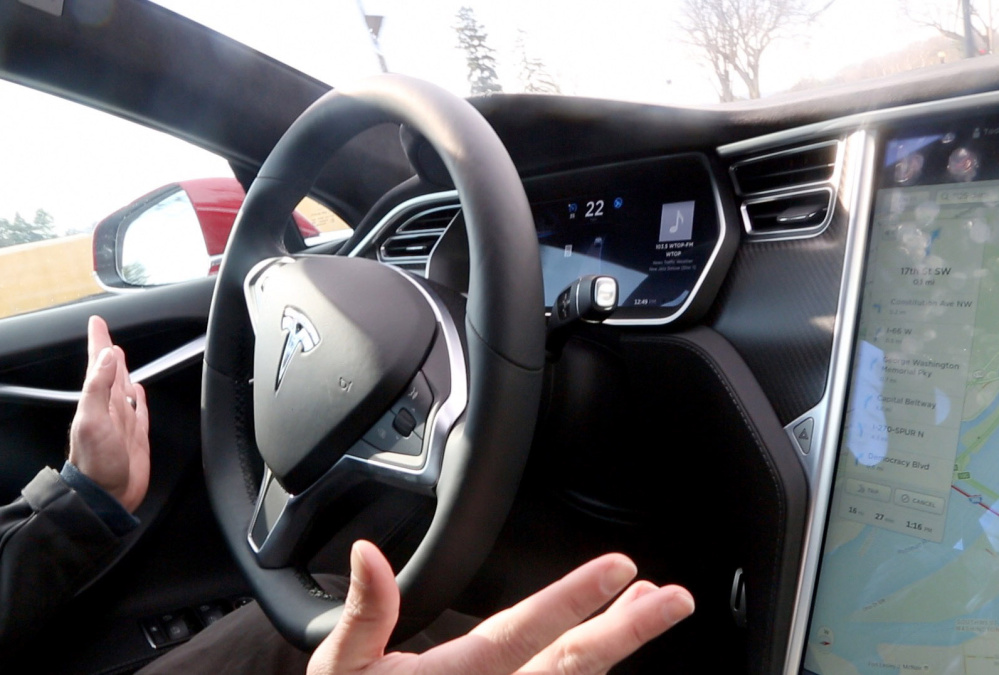In the wake of a series of Tesla crashes this year, the electric car maker said Sunday it is rolling out an upgrade to its semi-autonomous Autopilot feature that may help make it safer to use.
The company said while its vehicles’ existing software may currently cause a Tesla on Autopilot to scrape against a car that’s partially in its lane, or to ram into an obstacle that another driver ahead has swerved to avoid, a coming update will address both problems – as well as a host of others.
The software update, which will be rolled out around the world in the coming weeks, will give radar technology a more active role in Tesla’s Autopilot – a feature drivers can enable to allow the car to stay within its lane and to keep from hitting other vehicles. Tesla said it will allow the radar system to initiate automatic braking on its own, without requiring its vehicles’ optical cameras to agree the maneuver is needed. In addition, by bouncing radar signals underneath the car ahead, a Tesla will be able to see an additional car-length in front of itself – giving it a better chance of anticipating oncoming road hazards, said chief executive Elon Musk.
“I am highly confident this will be quite a substantial improvement,” Musk told reporters.
More importantly, all Teslas that enable Autopilot will now start using radar to build a three-dimensional map of the world. The map will help Tesla understand what’s “normal” – street signs, highway overpasses and so on – and what’s not, such as an unexpected obstacle ahead that requires automatic braking. The use of radar mapping brings Tesla that much closer toward Google’s vision of a robotic car in that Google uses a mixture of laser-based sensors, radar and traditional video cameras to see.
Teslas are not equipped with laser sensors and previously only used radar as a “supplementary” system to back up what its optical cameras could pick up visually. But as some drivers are discovering, the cameras themselves can be foiled by poor lighting or road conditions and even extreme temperatures. That’s what likely led to a fatal crash involving Autopilot in Florida earlier this year, when a Tesla’s cameras couldn’t distinguish the body of a truck from the bright sky behind it.
By giving radar a big promotion, Tesla believes it can help cut down on errors. But, said Musk, the risk of a crash while Autopilot is enabled will never be zero.
“It’s about minimizing the probability,” he said, “minimizing the probability of death, not the illusion of perfect safety.”
Send questions/comments to the editors.



Success. Please wait for the page to reload. If the page does not reload within 5 seconds, please refresh the page.
Enter your email and password to access comments.
Hi, to comment on stories you must . This profile is in addition to your subscription and website login.
Already have a commenting profile? .
Invalid username/password.
Please check your email to confirm and complete your registration.
Only subscribers are eligible to post comments. Please subscribe or login first for digital access. Here’s why.
Use the form below to reset your password. When you've submitted your account email, we will send an email with a reset code.